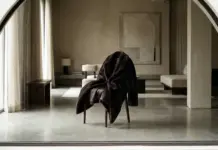The textile business puts tremendous strain on global resources since it requires a lot of water, energy, hazardous chemicals and resources overall. These days, this issue is a major concern for environmentally friendly textile production as well as a burden on the environment. Massive volumes of water are utilized in the wet processing of textiles. This water is laden with chemicals, dyes, and auxiliaries. If this effluent is released into the environment untreated, it contaminates it. The aquatic life and ground water might be seriously harmed by the chemical axillaries’ poisonous effluent, which is employed throughout the wet process. These days, using an environmentally friendly pretreatment technique is preferred.
Eco-Friendly Bleaching: What Is It?
Textiles are made whiter by the bleaching process. Eco-friendly bleaching is a method of treating textiles that reduces its negative effects on the environment without sacrificing the required degree of brightness or whiteness. This technique is often used to gray objects to make them seem white or to fabrics to prepare them for pastel color dying. Bleaching is a step in the preservation process for ancient textiles and a restoration or conservation technique for modern textiles. The bleaching procedure removes water-borne stains, oil-borne grime, and natural colorants. Since the sun was found to have a catalytic effect, direct sunlight has been used extensively for bleaching processes throughout history. It was previously known that natural bases, acids, and mineral salts might be used as bleaching agents. High degrees of whiteness were possible when using them as soaks and sours. Up to the seventeenth century, bleaching linens, cottons, and woolens in the sun was standard procedure.
A green substance hydrogen peroxide
An environmentally acceptable bleaching agent is hydrogen peroxide. Advanced oxidation methods are crucial for cleaner manufacturing. Hydrogen peroxide may accelerate the release of free radicals caused by ozone breakdown in water. The color of the fabric’s dye may be removed by ozone and hydrogen.
A sustainable blend of ethanol (etoh) and water (H2O):
This is how the RCFs are first made to swell in the Et-OH H2O mixture that contains 95% ethanol by volume. We can reuse Et-OH using this technique, which lowers effluent outflow. The ecologically friendly dyeing of RCFs in an EtOH–H2O combination, which eliminates the need for scouring or bleaching pretreatments, is a useful technique for protecting the environment.
Polyester bleaching using an environmentally friendly H2O2/Na4P2O7 liquor solution
PET fabric may be readily bleached using a liquor solution of H2O2/Na4P2O7. PET textiles are bleached for ten hours at 25°C in a liquor solution containing H2O2/Na4P2O7. The PET fabric will be as white as possible thanks to this technique. There has been a weight decrease of around 0.07%. This makes sense when you consider that the bleaching process eliminates unwanted byproducts from the fibers such waxes, pectin, suits, proteins, colors, hemicelluloses and other impurities.
In summary:
These days, the use of state-of-the-art, pollutant-free, ecologically beneficial knowledge known as green technology is highly valued in the textile sector. We need an eco-friendly bleaching method that is creative for this reason. We attempted to describe a few environmentally friendly bleaching techniques in this post, which may be useful for future studies.



































